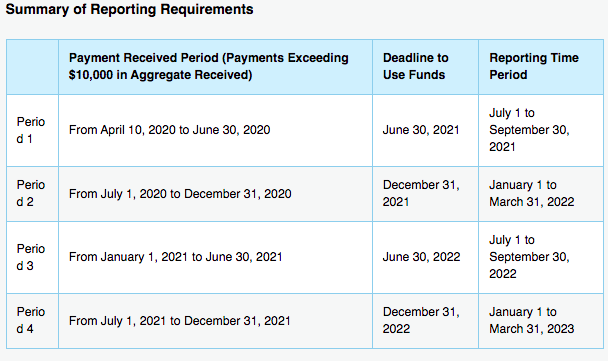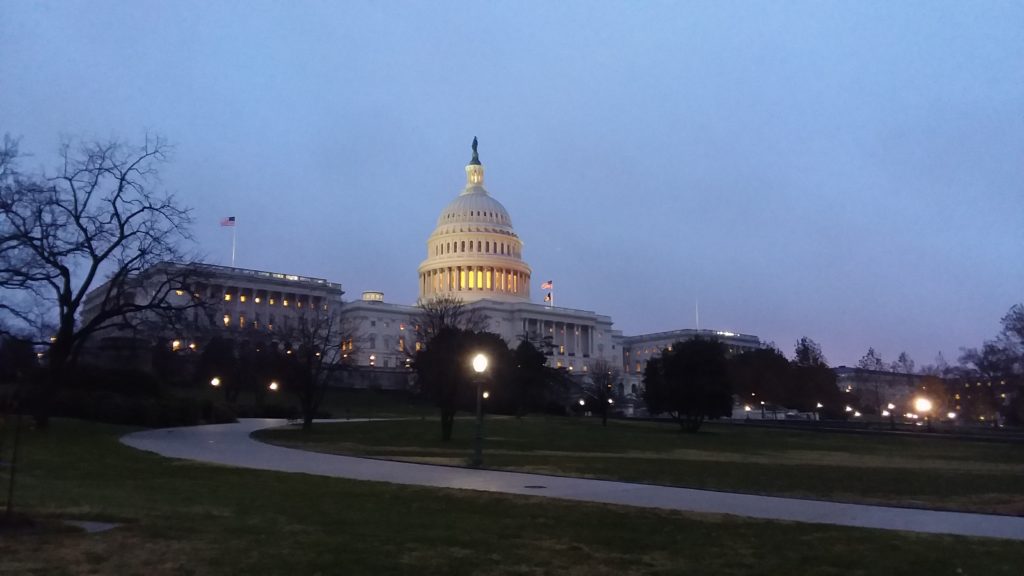Skilled nursing providers may have some financial aid on the way from the federal government to help address the ongoing costs from COVID-19, according to speakers at multiple industry events last week. The speculation comes as the government issued new reporting requirements and deadlines for the federal aid SNFs received over the course of the pandemic.
Executives at both Sabra Health Care REIT (Nasdaq: SBRA) and CareTrust REIT told the Nareit REITWeek investor conference that they expect $10 billion of the remaining roughly $24 billion in CARES Act funds to be disbursed.
Mark Parkinson, the president and CEO of the American Health Care Association (AHCA), told the Synergy Summit 2021 gathering on June 9, sponsored by Synergy HCA and SRX, that “there will be some positive news on the PRF in the next seven days and possibly sooner than that.”
“We think they’re going to make an announcement that they’re finally going to open up a portal so that we can apply and get some funding,” he said, adding that he was optimistic that the SNF sector would receive a “disproportionate amount of benefit.”
The original deadline for providers to report on how funds were used – and to return any unused Provider Relief Fund (PRF) dollars – was June 30. Both AHCA, which primarily represents for-profit nursing homes, and LeadingAge, the trade group representing nonprofit senior housing and care providers, have been advocating for an extension.
On Friday, the Department of Health and Human Services (HHS) issued new reporting requirements that change the deadline. The availability of PRF funds is now based on the date the payment was received, superseding the mandate that all payments be used or returned by June 30, according to HHS.
“Recipients are required to report for each Payment Received Period in which they received one or more payments exceeding, in the aggregate, $10,000 (rather than $10,000 cumulatively across all PRF payments),” the department said in its update. “Recipients will have a 90-day period to complete reporting (rather than a 30-day reporting period).”
The reporting requirements also now apply to SNFs that received funds from the SNF and Nursing Home Infection Control Distribution, HHS noted.
HHS listed each new deadline to use funds grouped by four time periods in which providers received payments. Under the new deadlines, the only providers who must use their funds by June 30 of this month are providers who received payments from April 10, 2020 to June 30, 2020, with the amount exceeding $10,000 in aggregate.

Originally, HHS had set a deadline of February 15, 2021, as the first PRF reporting deadline, but the reporting requirements were formally delayed in January.
SNFs and assisted living facilities have received about $14 billion of the $178 billion in the PRF, established by the CARES Act, the American Health Care Association (AHCA) noted in a press release calling for an extension of the June 30 deadline. But operating costs remain high while occupancy remains slow to recover despite some promising signs of increases, AHCA argued in the release.
In addition, spending the money may not be as simple as a provider receiving an infusion from the PRF and applying it to their COVID-19 costs, LeadingAge Vice President of Health Policy and Integrated Services Nicole Fallon told Skilled Nursing News in an interview that took place before the extension announcement.
“Some of our members got FEMA [Federal Emergency Management Agency] grant dollars, or Paycheck Protection Program (PPP) dollars, or money through the CARES Act dollars that the states got,” she explained. “And all of that has to be applied to their expenses for COVID essentially first.”
LeadingAge recently met with leadership at the Health Resources & Services Administration (HRSA) to stress the importance of granting providers more time to spend some of the PRF dollars and the need for the next funding application to be open, as well as clarity around PRF reporting requirements.
Clifton Porter II, the senior vice president of government relations at AHCA, was cautiously optimistic that there would be an extension of the deadline, he told SNN prior to the HHS announcement. This was in part because of a letter sent to HHS Secretary Xavier Becerra by members of Congress on June 4 calling for aid to long-term care facilities. That letter was led by Rep. Terri Sewell, a Democrat from Alabama.
The letter called for the reporting deadline to be extended to December 2022 and for $10 billion to be allocated to long-term care facilities.
Porter stressed the importance of the PRF funds to ongoing operation, given the increased costs for hiring and retaining workers, to say nothing of the hero pay for workers during the pandemic.
“The pandemic has been so significant that I’ve not had a situation or heard of a specific situation where having way, way too much money is a problem,” he told SNN. “Clearly there have been isolated situations where money’s been returned.”
Fallon said this question has been a sticking point for HRSA, which had struggled to understand how providers can both need more funds and need more time to spend the money that they already have before June 30.
LeadingAge has been focused on explaining the need for clarity on reporting, but also emphasizing the fact that the PRF is the resource of last resort, given the other various aid programs.
“[Providers would] like a little more clarity on what actually is going to get reported or count as expenses,” Fallon explained. “I know the prior administration tried to leave things sort of open-ended, with the idea that if they tried to list everything out, they would miss something that was important.”
For providers, AHCA has been emphasizing the need to document everything with regard to reports, hosting webinars and training sessions for members on various systems for tracking PRF funds and setting up accounting systems for those dollars to make reporting easier, Porter told SNN.
“There’s not been a lot of specifics, necessarily, about how the reporting has to look, per se, other than some broad guidance,” he noted. “But we’ve given some fairly specific instructions, and most of it has basically been around providing as much detail as possible.”
Labor costs are the greatest driver of expenses now, Porter said, between the increases of the pandemic and the increase in temporary staff, and those costs have not declined with the COVID-19 case drop that came with the vaccine rollout.
From his point of view, this is what makes a PRF distribution vital.
“Provider relief funds, essentially, go to workers,” Porter said. “At the end of the day, 73%, 74% of costs in our facilities is labor. You’ve got to think about it that way, to say, whatever we get, the bulk of that has to go to labor. And labor is probably the most explosive expense item that we have … we need these resources, so that we can continue to provide our staff what they deserve, and more importantly, provide our patients what they deserve, which is people to care for them.”
Alex Zorn contributed reporting.
Companies featured in this article:
American Health Care Association, Department of Health and Human Services, LeadingAge



